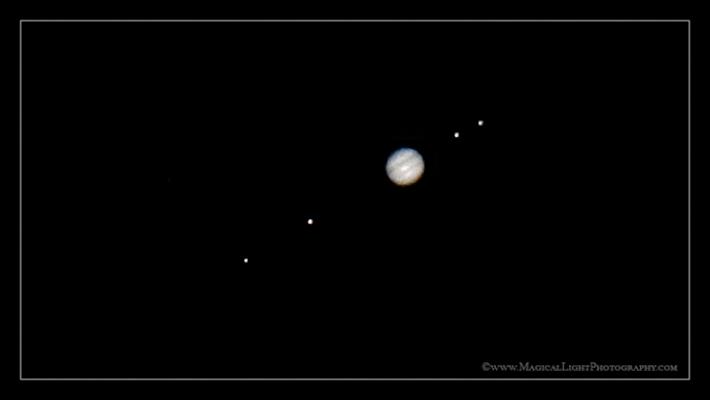By Chuck Cagara
REPORT FROM THE FIELD: Sierra Nevada Foothills, California, USA
August 4, 2020
After spending some time in July enjoying and photographing Comet NEOWISE, I decided that it was time to turn to the telescope and have a gander at two of the easier targets in the night sky – gas giants Jupiter and Saturn.
If you follow astronomy you’ll know that when two astronomers meet they ask of each other, “So, how was the seeing tonight?”
By ‘seeing’ they want to know if the night air was both clear and stable, so as to give the sharpest view possible through their telescopes. Poor seeing occurs when hot daytime temperatures produce heat waves that rise and are amplified when viewed at the powerful magnifications needed to gain attractive views of the planets. So too, is the seeing poor, when weather conditions bring haze or some cloudiness to your local sky at the time of your observations.
Note that during times of poor seeing, all is not always lost – for brief flickering moments the air may become just stable enough to enjoy a crisp, fleeting view of Jupiter’s great red spot or the Cassini Division of Saturn’s ring system.
So, on this hot August night (daytime high was 98°) knowing the seeing would be questionable, I hauled out the 8″ Meade Schmidt-Cassegrain telescope and attached a camera to it. This method of astrophotography, where the camera attaches directly to the tube is known as ‘prime focus’ photography.
Alas, as expected, the seeing was generally poor and the planets were mostly blurry discs without clarity or detail.
However, we did manage several photos taken at just those moments when the seeing improved for a fleeting moment.
Here is the best of the lot clearly showing the marbled face of Jupiter along with four of its seventy-nine moons. From left to right they are Io, Europa, Ganymede and Callisto. These are called the ‘Galilean Moons’ because they were first seen and described through his crude telescope by Galileo in 1610.
And now, from the 1951 movie, “The Thing from Another World,” I exhort you to:
“Watch the skies. Everywhere. Keep looking. Keep watching the skies.”
Over and out for now…






I wondered about that, Curmudgeon! Hope the “seeing” is good tonight!
Edhat, you need to change that headline!